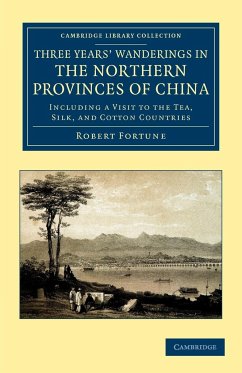First published in 1847, this is an important description of what were then little-known parts of China by the botanist Robert Fortune (1812-80). Son of a hedger, Fortune rose to be one of the most famous gardeners, botanists and plant hunters of his day, making several visits to China to bring out commercially important plants, especially tea for introduction to British India, and ornamental plants (many now bearing the name fortunei) which were enthusiastically taken up by Victorian gardeners. His three years in China took him to areas newly open to Europeans after Chinese defeat in the First Opium War (1839-42). His sometimes trenchant criticisms of the Chinese - like his contemporaries, he was fully persuaded of the superiority of the West - are balanced by his knowledgeable comments on local flora and plant cultivation, and the book remains an insightful early description of inland regions of China.
Bitte wählen Sie Ihr Anliegen aus.
Rechnungen
Retourenschein anfordern
Bestellstatus
Storno


